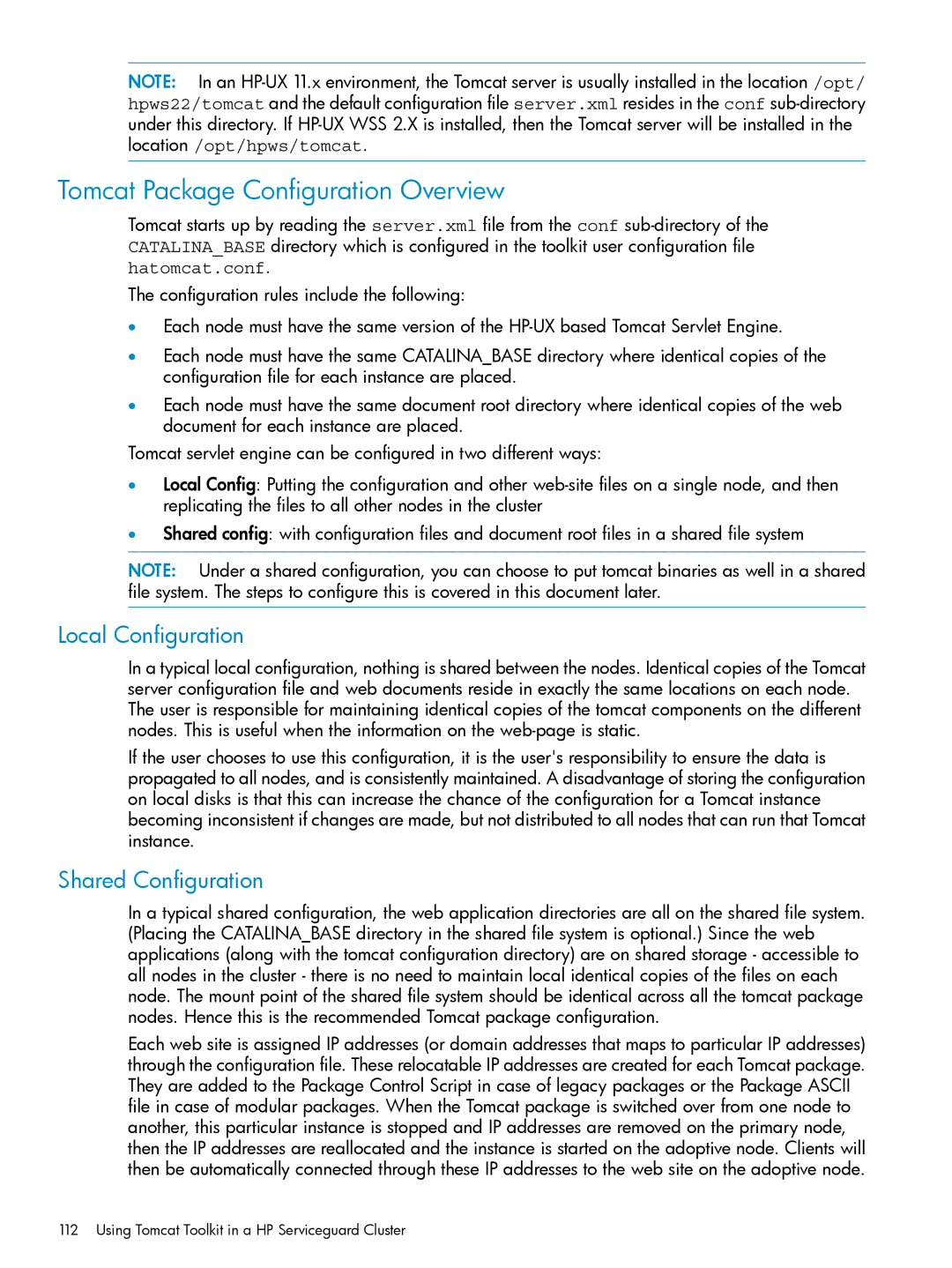
NOTE: In an
Tomcat Package Configuration Overview
Tomcat starts up by reading the server.xml file from the conf
The configuration rules include the following:
•Each node must have the same version of the
•Each node must have the same CATALINA_BASE directory where identical copies of the configuration file for each instance are placed.
•Each node must have the same document root directory where identical copies of the web document for each instance are placed.
Tomcat servlet engine can be configured in two different ways:
•Local Config: Putting the configuration and other
•Shared config: with configuration files and document root files in a shared file system
NOTE: Under a shared configuration, you can choose to put tomcat binaries as well in a shared file system. The steps to configure this is covered in this document later.
Local Configuration
In a typical local configuration, nothing is shared between the nodes. Identical copies of the Tomcat server configuration file and web documents reside in exactly the same locations on each node. The user is responsible for maintaining identical copies of the tomcat components on the different nodes. This is useful when the information on the
If the user chooses to use this configuration, it is the user's responsibility to ensure the data is propagated to all nodes, and is consistently maintained. A disadvantage of storing the configuration on local disks is that this can increase the chance of the configuration for a Tomcat instance becoming inconsistent if changes are made, but not distributed to all nodes that can run that Tomcat instance.
Shared Configuration
In a typical shared configuration, the web application directories are all on the shared file system. (Placing the CATALINA_BASE directory in the shared file system is optional.) Since the web applications (along with the tomcat configuration directory) are on shared storage - accessible to all nodes in the cluster - there is no need to maintain local identical copies of the files on each node. The mount point of the shared file system should be identical across all the tomcat package nodes. Hence this is the recommended Tomcat package configuration.
Each web site is assigned IP addresses (or domain addresses that maps to particular IP addresses) through the configuration file. These relocatable IP addresses are created for each Tomcat package. They are added to the Package Control Script in case of legacy packages or the Package ASCII file in case of modular packages. When the Tomcat package is switched over from one node to another, this particular instance is stopped and IP addresses are removed on the primary node, then the IP addresses are reallocated and the instance is started on the adoptive node. Clients will then be automatically connected through these IP addresses to the web site on the adoptive node.
